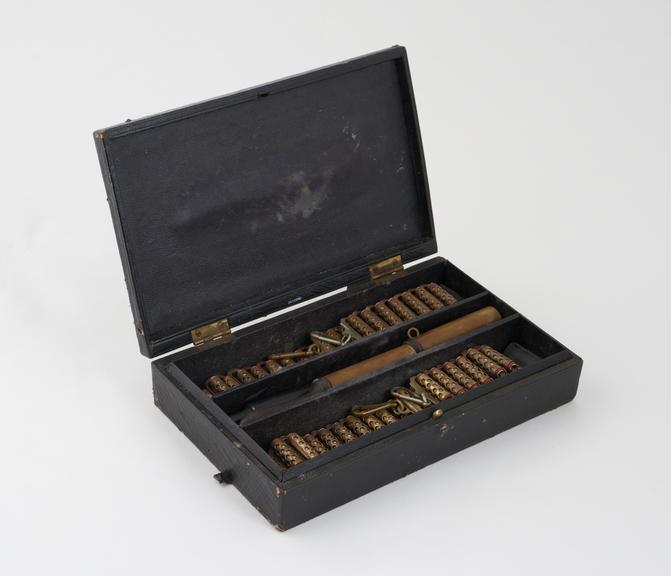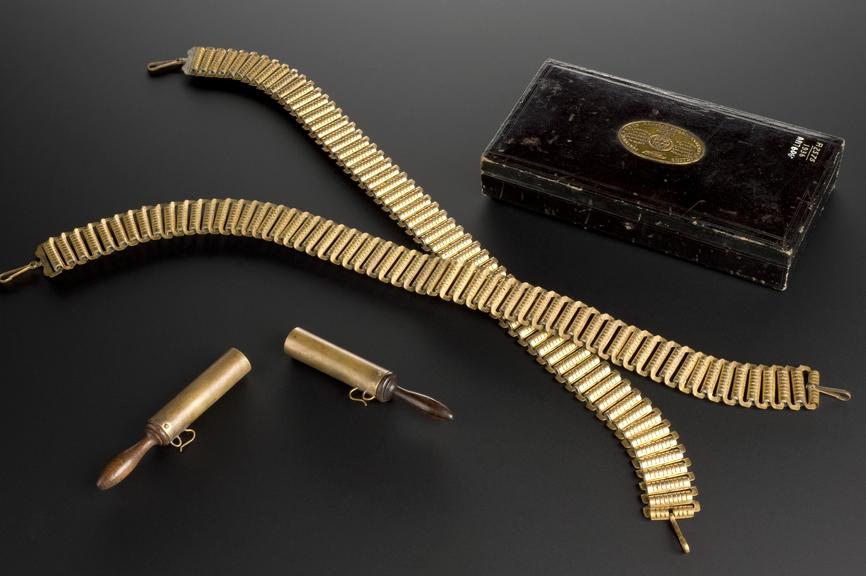





Two copper and zinc chains and 2 electrodes in leather covered box, invented by Pulvermacher, made in France, 1855-1870
When placed next to the skin, the copper and zinc chains produced a mild electric current. The current was said to treat aches and pains in the joints and muscles (rheumatism) and the nerves (neuralgia). The chains were also recommended for sexual and reproductive problems. Isaac Louis Pulvermacher invented this device in the 1850s and Charles Dickens (1812-1870) is known to have used it.
Details
- Category:
- Therapeutics
- Collection:
- Sir Henry Wellcome's Museum Collection
- Object Number:
- A117606
- Materials:
- box, wood, box, leather, box, brass, copper, zinc and walnut
- Measurements:
-
overall: 34 mm x 210 mm x 112 mm, .56kg
- type:
- electrotherapy device
- credit:
- Bailliere, Tindall and Cox




